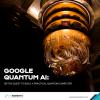
Breaking News
 Trump's Corporate Favor Factory
Trump's Corporate Favor Factory
 Google Quantum Supremacy And Artificial Intelligence
Google Quantum Supremacy And Artificial Intelligence
 NASA Just Activated the Earth Defense Force Ahead of 3I/Atlas Arrival
NASA Just Activated the Earth Defense Force Ahead of 3I/Atlas Arrival
 Dubai: The Ugly Life Under Technocracy
Dubai: The Ugly Life Under Technocracy
Top Tech News
 Graphene Dream Becomes a Reality as Miracle Material Enters Production for Better Chips, Batteries
Graphene Dream Becomes a Reality as Miracle Material Enters Production for Better Chips, Batteries
 Virtual Fencing May Allow Thousands More Cattle to Be Ranched on Land Rather Than in Barns
Virtual Fencing May Allow Thousands More Cattle to Be Ranched on Land Rather Than in Barns
 Prominent Personalities Sign Letter Seeking Ban On 'Development Of Superintelligence'
Prominent Personalities Sign Letter Seeking Ban On 'Development Of Superintelligence'
 Why 'Mirror Life' Is Causing Some Genetic Scientists To Freak Out
Why 'Mirror Life' Is Causing Some Genetic Scientists To Freak Out
 Retina e-paper promises screens 'visually indistinguishable from reality'
Retina e-paper promises screens 'visually indistinguishable from reality'
 Scientists baffled as interstellar visitor appears to reverse thrust before vanishing behind the sun
Scientists baffled as interstellar visitor appears to reverse thrust before vanishing behind the sun
 Future of Satellite of Direct to Cellphone
Future of Satellite of Direct to Cellphone
 Amazon goes nuclear with new modular reactor plant
Amazon goes nuclear with new modular reactor plant
 China Is Making 800-Mile EV Batteries. Here's Why America Can't Have Them
China Is Making 800-Mile EV Batteries. Here's Why America Can't Have Them
Family Thrives In The Arctic Circle By Building Cob House Inside A Solar Geodesic Dome

Few people can handle the frigid temperatures of winter, let alone contemplate what it must be like to live in the Arctic Circle. However, one Norwegian family has managed to not only survive, but thrive, up North, and has done so in sustainable fashion.
Inhabitat reports that the Hjertefølger family has been living on Sandhornøya island in Norway since 2013, and has done so by living in a three-story cob home called the Nature House. Constructed from sand, water, clay, and other organic materials, the structure took just three weeks to build and is surrounded by a functional and solar geodesic dome.
The SOLARDOME encasement is 25-foot high and completely encapsulates the five-bedroom, two bathroom abode. This building protects the six-person family from strong winds and heavy snow loads. Additionally, it helps to drastically reduce the heating bill.
Because the geodesic dome extends past the cob home, there is room for a garden area which supplies the family with apples, cherries, plums, apricots, kiwis, grapes, cucumbers, tomatoes, herbs, squash and melons – basically, much of their food supply. The family is able to subsist sustainably despite living without sunlight for three months every year.
"We love the house; it has a soul of its own and it feels very personal. What surprises us is the fact that we built ourselves anew as we built the house. The process changed us, shaped us."
It's been three years since the Hjertefølger family moved to the Arctic Circle, and they have no intention of leaving the sanctuary that's been built.
"The feeling we get as we walk into this house is something different from walking in to any other house," Hjertefølger shares. "The atmosphere is unique. The house has a calmness; I can almost hear the stillness. It is hard to explain. But it would have been impossible getting this feeling from a house someone else has planned and built for us, or a house with corners and straight lines."

 China Innovates: Transforming Sand into Paper
China Innovates: Transforming Sand into Paper

